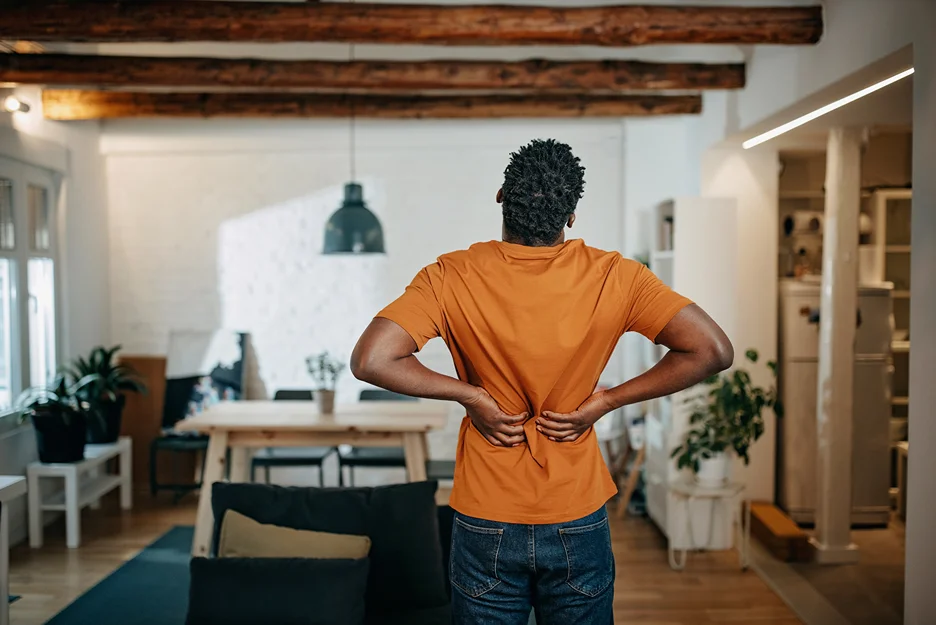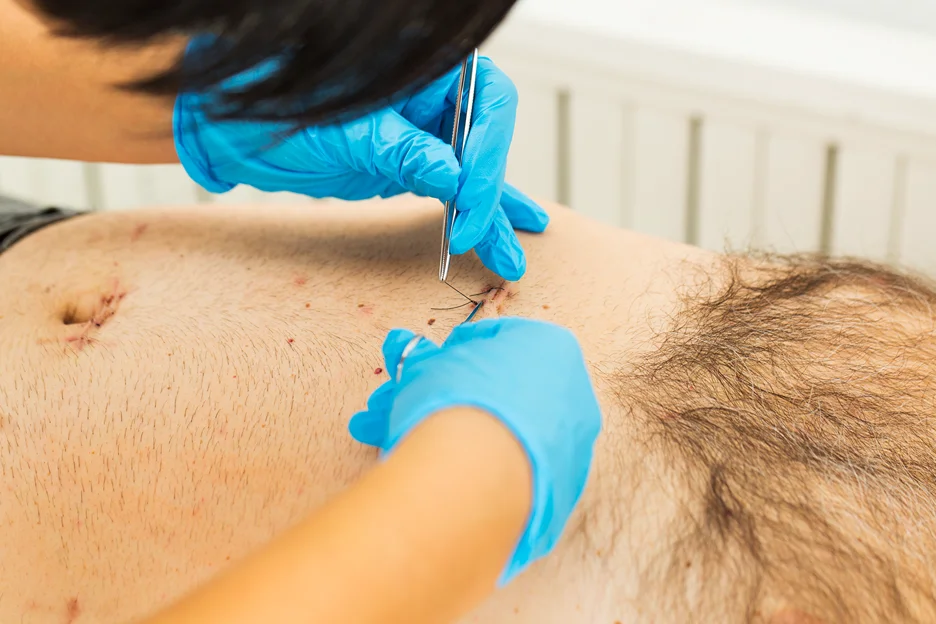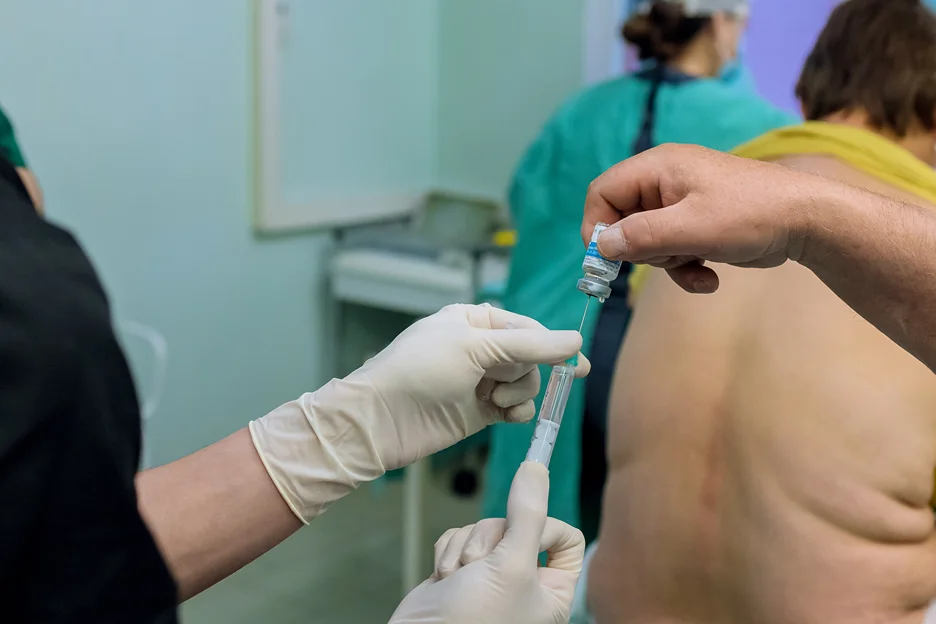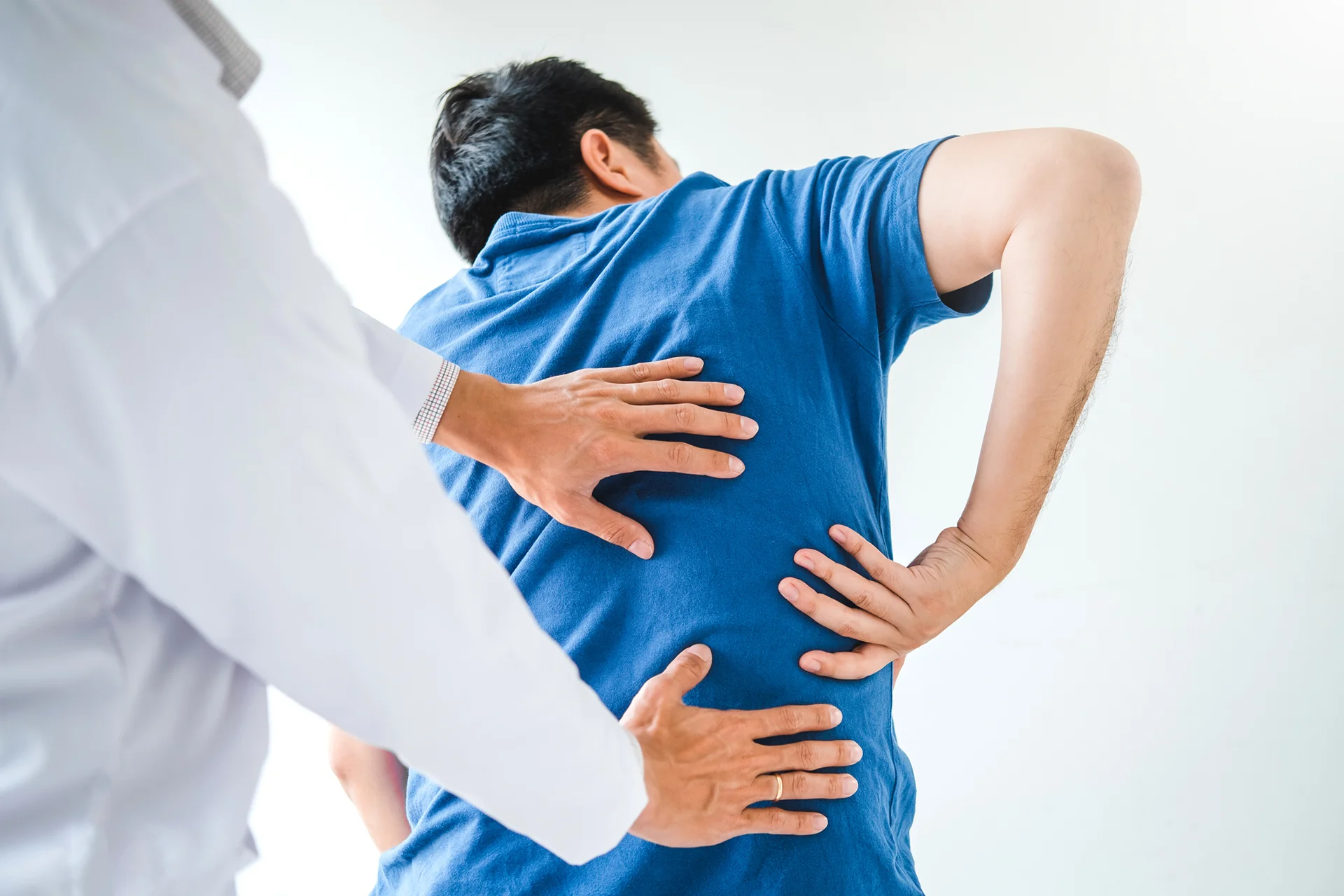Gallbladder surgery can lead to pain flaring up in other areas. Here’s how to handle back pain specifically.
Thought gallbladder surgery solved it all? Nope. That back pain that seemed to come out of nowhere has other plans. While frustrating, this annoyance tends to be short-lived – so take heart.
With invaluable insights from experienced specialists at Kaly, you will be better equipped to handle this temporary nuisance on the road to feeling like yourself again.
Why Do I Have Back Pain After Gallbladder Removal Surgery?

Back pain after gallbladder removal surgery is typically caused by gas used to inflate the abdomen during the procedure, the strain on muscles from surgical positioning, or rarely from complications like organ injury.
Gas Pain Can Cause Back and Shoulder Discomfort
During laparoscopic gallbladder surgery, carbon dioxide gas is used to inflate the abdomen. This improves visibility for the surgeon and allows for smaller incisions. However, some of this gas can become trapped in the body after the procedure.
The residual gas can irritate the diaphragm muscle and phrenic nerves connecting to the gallbladder area. This often causes referred shoulder pain or achiness in the upper back that radiates toward the shoulders.
According to our experience, this gas-related pain after laparoscopic cholecystectomy is usually worst in the first 1-3 days following surgery.
As the body slowly reabsorbs the trapped carbon dioxide gas, the pain typically diminishes over around one week. While uncomfortable, it ultimately resolves on its own.
Muscle Strain Plays a Role
The positioning required during gallbladder removal can also strain muscles in the back, shoulders, and abdomen. Lying still for an extended period with tension placed on these muscle groups can lead to postoperative soreness.
However, this strain-related back pain tends to be temporary. As the affected muscles heal in the days following surgery, the achiness usually dissipates.
Rare Complications Can Cause Lasting Pain
In a minority of cases, complications during gallbladder removal may result in more persistent back pain. For example:
Injury to the bile ducts occurs in about 0.4-1% of laparoscopic procedures as revealed in this study. This requires surgical repair and can cause lasting pain based on our specialists’ experience.
Bleeding, infections, or other organ injury are also rare complications that may lead to chronic post-surgical pain.
Additionally, some patients develop sensitivity near their surgical incisions or have gallbladder-like pain after surgery for unknown reasons. For most individuals though, back pain after uncomplicated gallbladder surgery resolves within days to weeks as the body recovers.
Time to end that needless pain. Easily book consultations with physicians and physical therapists about lingering back discomfort using Kaly’s nifty online scheduling.
Is Upper Back Pain Common After Gallbladder Removal?

Yes, upper back pain is reasonably common after gallbladder removal, especially with laparoscopic surgery, as gas can irritate the diaphragm and nerves referring pain between the shoulders; it usually resolves within weeks.
In a study published in the Journal of Laparoendoscopic & Advanced Surgical Techniques, 62 patients experienced postoperative shoulder-tip pain after the operation.
Causes of Post-Cholecystectomy Back Pain
There are a few factors that can lead to upper back discomfort after gallbladder removal surgery:
- The carbon dioxide gas used during laparoscopic procedures can rise and irritate the diaphragm after surgery. Since the phrenic nerves connect here, this often refers to pain between the shoulder blades.
- Incisions placed under the right rib cage during laparoscopic surgery can cause nerve irritation along the bra line and upper spine nearest the surgical sites.
- If abdominal muscles are strained during surgery, this can also manifest as achiness along the upper back.
Laparoscopic Surgery More Prone to Upper Back Pain
Patients who have laparoscopic gallbladder removal seem especially prone to upper back pain in the days and weeks following their procedure based on our observations.
This may be due to the role of residual gas from the laparoscopic approach irritating the diaphragm and phrenic nerves.
Upper Back Pain Usually Resolves Within Weeks
For most patients, the soreness in the upper back region diminishes within the first few weeks after surgery as swelling decreases and gas dissipates. However, it’s important to discuss any persistent post-cholecystectomy pain with your surgeon to address the underlying cause.
How Common is Low Back Pain After Gallbladder Surgery?
Low back pain is reasonably common after gallbladder removal, though not as widely reported as upper back discomfort. Research shows that overall back pain is a frequent complaint following gallbladder surgery.
Causes of Lower Back Pain Post-Cholecystectomy
- The lower back muscles can become strained while lying motionless during lengthy gallbladder procedures. This strain can cause post-operative achiness.
- Nerves serving the lower back connect to the digestive system, which is disrupted after gallbladder removal. Inflammation around surgical sites can radiate into these nerves.
- Any swelling near the abdomen, gallbladder area, or surgical incisions can potentially irritate nerves that refer pain to the lower back region.
Prevalence Less Studied Than Upper Back Pain
While upper back pain seems more commonly discussed in research, low back pain after laparoscopic or open cholecystectomy still affects a significant number of patients based on our clinical observations.
Studies show overall back pain is frequent, though the distinction between upper versus lower prevalence is lacking.
How Long Does Back Pain After Gallbladder Surgery Last?
The back pain following uncomplicated laparoscopic or open gallbladder removal usually resolves within days to weeks after the procedure as the body recovers according to our experience. However, the precise duration can vary depending on the underlying cause.
- For example, gas-related pain from laparoscopic surgery often diminishes within 5-7 days as the residual carbon dioxide used to inflate the abdomen is absorbed based on our experience with patients.
- Muscle strains from surgical positioning also tend to improve within the first 1-2 weeks as the tissues heal.
In some cases, it may take a few months for swelling around surgical sites to fully subside and irritated nerves to calm down. Rarely, a small number of patients develop chronic neuropathic pain if nerves are damaged during surgery.
In general though, within a month or two the majority of post-cholecystectomy back pain fades away for most patients as inflammation decreases.
What To Do About Right Back Pain After Gallbladder Removal?
Right back pain after gallbladder removal can be managed with over-the-counter pain medications, physical therapy exercises, lifestyle adjustments to prevent strain, and consulting your surgeon if you’re experiencing persistent pain.
- Pain Medication
Over-the-counter NSAIDs like ibuprofen or acetaminophen can provide relief by reducing inflammation and blocking pain signals according to our specialists at Kaly.
These medications inhibit enzymes that lead to swelling, lowering the production of inflammatory prostaglandins involved in pain pathways. Use as directed by your physician for post-surgical discomfort.
A study conducted by Michigan Medicine found that many patients were able to manage their post-surgical pain with over-the-counter medications such as Tylenol and Motrin.
Also, it’s worth noting a 2016 study found that using intraperitoneal irrigation with sodium bicarbonate solution during laparoscopic cholecystectomy reduced patients’ postoperative pain compared to irrigation with normal saline.
- Physical Therapy
Working with a physical therapist can aid recovery through exercises that stabilize the back, improve flexibility, and encourage gradual activity. This helps strengthen muscles strained during surgery positioning and prevents future irritation.
Light activity also releases natural pain-relieving endorphins.
- Lifestyle Adjustments
Practicing good posture, avoiding heavy lifting, staying moderately active through light walking, and maintaining a nutrient-rich diet can help manage back pain during recovery. Protecting the back from further strain and providing the resources needed to heal may be necessary.
How To Manage Back Pain After Gallbladder Surgery Years Later?

- Assess for Post-Cholecystectomy Syndrome
Recurring pain years later may be due to post-cholecystectomy syndrome (PCS), which causes digestive symptoms like pain after 5-40% of surgeries. PCS results from altered bile flow without the gallbladder. Diagnostic testing can check for causes like strictures.
- Explore Treatment Options
Medications, dietary changes, endoscopic procedures, or surgery may help treat PCS depending on the cause. Anti-inflammatories, antispasmodics, or analgesics can alleviate pain and discomfort. Identifying and avoiding trigger foods is also important.
A randomized controlled trial found that intraoperative neuromuscular electrostimulation (INSI) significantly reduced upper abdominal pain at 24 and 48 hours after laparoscopic surgery compared to controls.
- Try Complementary Therapies
Alternative approaches like acupuncture, massage therapy, or mindfulness practices may also help manage stubborn back pain after cholecystectomy. These can reduce muscle tension, nerve irritation, and inflammation.
- Ask About Nerve Blocks
For severe chronic pain, nerve blocks can temporarily interrupt pain signals. These may provide enough relief to participate in physical therapy and make lifestyle changes to address the pain long-term.
- Modify Activities
Pacing activities, using proper lifting techniques, and avoiding potential strain are crucial to prevent exacerbating post-surgical back pain. Light stretching and exercise may also help.
- Communicate With Your Doctor
Discuss any persistent back pain with your care team to explore both medical and lifestyle solutions. While frustrating, residual pain years after gallbladder removal can often be managed through a multimodal approach.
Don’t let back pain stall your recovery. Kaly checks insurance coverage so you only see covered GI specialists in your area regarding lingering back pain. Find the best one now!
